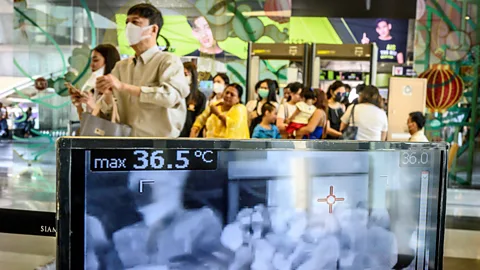
In January 2020, Thai authorities were among the first to deal with a concerning new disease. The country's shopping malls were on the frontlines.
A new strain of pneumonia, which had been worrying Chinese scientists and doctors, suddenly became a global issue.
On January 13, Thailand reported the first case of this new respiratory illness outside China: a 61-year-old resident of Wuhan, China, who had arrived in Thailand five days earlier. Gradually, the number of cases reported in Thailand increased.
Within a week, other Asian countries like Japan and South Korea reported cases. Within three weeks, the number of cases rose to the point where the World Health Organization (WHO) declared the disease a "public health emergency of international concern" on January 30, 2020.
It would become much worse.
The gradual spread of the disease began to capture the attention of the world's media. In Bangkok, Mladen Antonov, a Bulgarian photographer working for the agency Agence France-Presse (AFP), started covering the growing reaction to the disease.
"Thailand took very early measures," Antonov said.lls the BBC from his home in Hong Kong in late 2024. "Southeast Asia has a big trauma from previous pandemics like SARS, so they are very cautious about all this."
"You have to find a way to be inventive because it's very repetitive... masks, masks, masks," says Mladen Antonov. He explains that Thai authorities quickly installed body heat monitors in places like shopping malls. Businesses in the malls usually paid for the equipment. The monitors detect any unusually high body temperatures, and anyone with a fever is reported to the authorities.
"I think it was the 27th of January when this happened, or something like that. This is just the beginning," says Antonov. "Our job as journalists for the wire was to provide daily images of how the world reacts. So I was walking around, going to different places, searching for images to show masks. That's what we started doing first, showing pictures of people with masks," he says.
